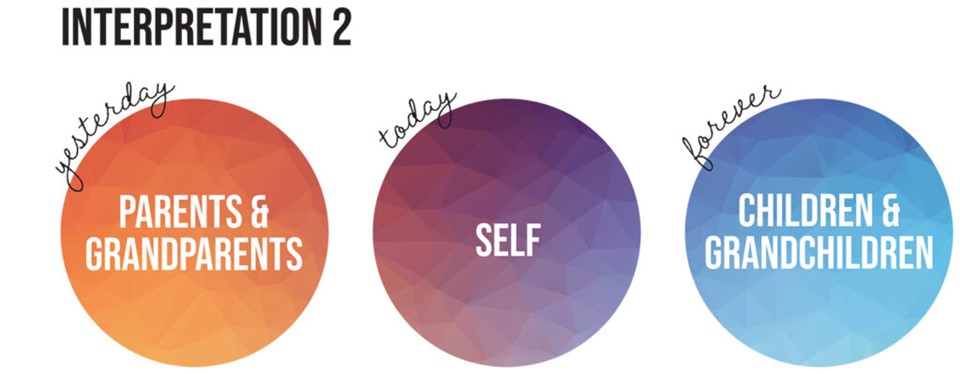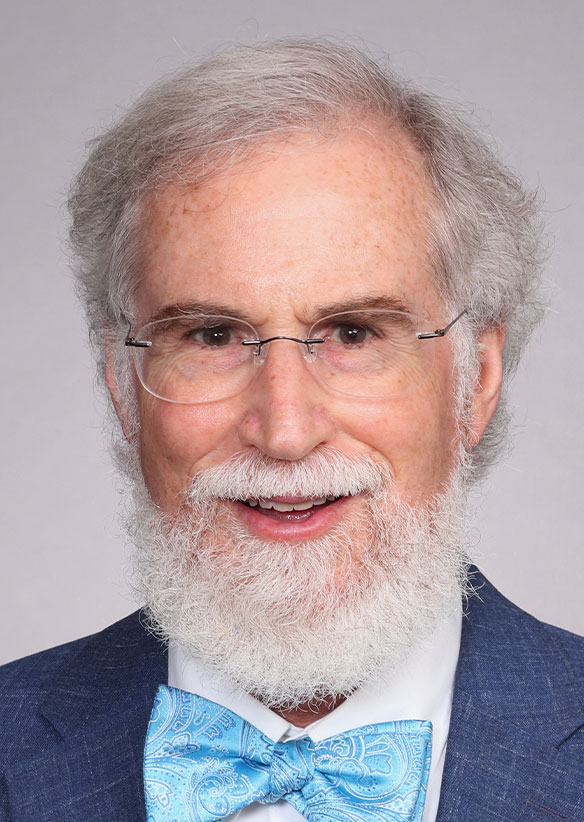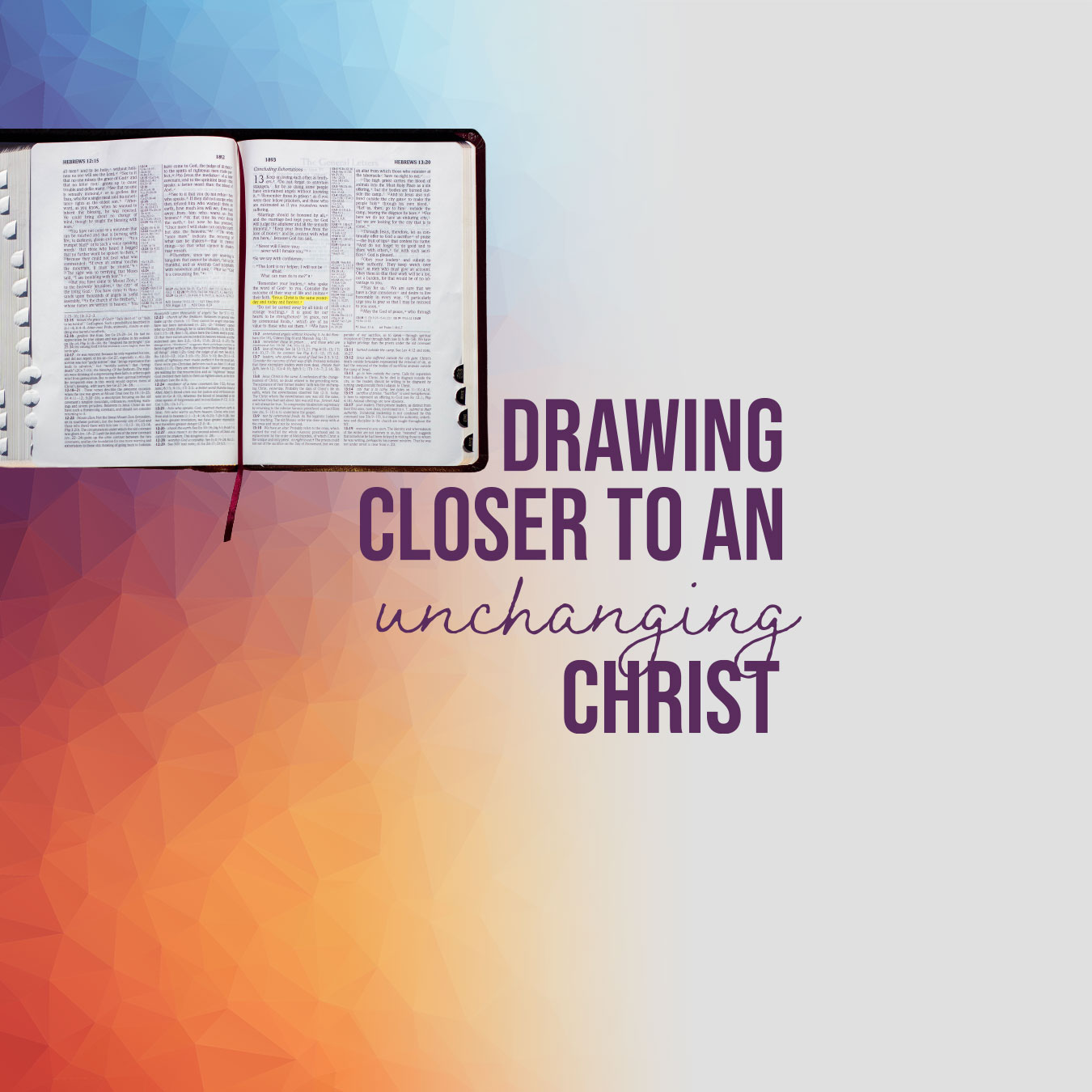Think about it. Does even one of the following statements sound like — feel like — good news to you? “My world, the same yesterday and today, and forever.” “My church, the same yesterday and today and forever.” “My life, the same yesterday and today and forever.” “ME, the same yesterday and today and forever.” More often than not, these statements, and especially the last two, leave a taste of hopelessness in our mouths. They are refrains of despair in our hymn of resignation to the inevitable and immutable rather than confident chorales celebrating a future bright beyond imagining. Why, then, should we turn to Heb. 13:8 for hope, strength, encouragement and confidence at the beginning of a new academic year?
Obviously, the only hope for something that is not yet perfect is that it will change, not stay forever the way it always has been and continues to be. My world, my church, myself — none of these is perfect. Jesus is. But are these words from Hebrews good news for us?
How have you “learned Christ” (Eph. 4:20)? What is Jesus like? Has He been compassionate toward you, caring, sympathetic, the friend who’s always ready to listen? Has He been strong to save, mighty in the face of overwhelming challenges, threats, problems? Is He the big brother you look up to, try to emulate, want to be like or even be “when you grow up”? Is the Jesus you know someone you hope will be the same tomorrow as He was yesterday and is today? Or has He seemed distant — infinitely distant? Is He from a time, a place, a reality so far removed from your own that no communication between the two is possible? Or, when you think about Jesus, do you think primarily of what you believe about Him? Is He more teaching than teacher for you? An article of the creed? The faceless donor of the new heart that now keeps you alive? Do you hope none of this will ever change?
Heb. 13:8 is much more personal than you may think. The author is not claiming that Jesus is the same as He always has been in some abstract, cosmic way. Jesus is the same person: “Jesus Christ, yesterday, today — the same Jesus Christ — and forever.” He remains Himself, true to Himself, in His being, in His relationships, true to His word.
“HE REMAINS HIMSELF, TRUE TO HIMSELF, IN HIS BEING, IN HIS RELATIONSHIPS, TRUE TO HIS WORD.”
“But,” we ask, “isn’t Jesus the one Person of the Trinity who does change?” Hebrews itself teaches that the Father says of this Son — right up front — “You are my Son, today I have begotten You” (Heb. 1:5 ESV). Whatever that means, it sure sounds like something has changed. Whose yesterday and today and forever are we talking about here?
Readers old and new have answered this last question in two different ways, and some see it both ways. Martin Luther is a good example. In his 1535 “Lectures on Galatians,” Luther speaks of this as Jesus’ yesterday, today and forever:
Yesterday, before the time of His coming in the flesh; today, when He has been revealed in time; now and forever He is the same Christ. Through one and the same Jesus Christ, therefore, all believers, past, present, and future, are delivered from the Law, justified, and saved.

Luther is not alone in understanding the words as a reference to the “history” of our Lord Jesus. Others refer the words to His earthly ministry (yesterday), His risen and exalted status (today), and His coming in glory to rule forever (forever). Either way, He is “one and the same Jesus.” Recall the attention paid to the marks of the nails and spear in the Resurrection narratives: Those are the marks that this is “one and the same Jesus” — the same Jesus who lived and died has now risen from the dead. Or think of John Donne’s “A Hymne to God the Father,” especially the final verse:
I have a sinne of fear, that when I’have spunne
My last thread, I shall perish on the shore;
Swear by thy self, that at my death thy Sunne
Shall shine as it shines now, and heretofore…
Donne is desperate for the assurance that in the “and forever,” his God and Lord will be the same God and Lord he has known and trusted throughout his life. In other places, however, Luther can speak of these as our yesterday, today and forever:
God helps us as he helped our forefathers, and as he will help our heirs, to the honor and glory of his divine name forever.

Here Luther speaks of a very personal yesterday: our fathers and great-grandmothers; and of a very personal forever: our children, and great-great-great grandchildren. Others think more of the yesterdays and todays of collective humanity, of “yesterday” as the Old Testament period or of the whole history of humanity from Adam to us. But, again, the point is always the same: It doesn’t matter how I have changed, it doesn’t matter how the world will change, Jesus remains “the one and the same Jesus.”
It’s difficult to choose between these approaches. Heb. 13:7, with its reference to our now-sainted “leaders,” all those who taught us the Word by their lives and by their deaths, might seem to point us to a more human yesterday and today. Heb. 13:9, on the other hand, with its warning against the alluring, varied, exotic delicacies of the new teachings being served up to the readers, might include false teachings that “Jesus” is yesterday one thing and tomorrow another, so the author assures us of the opposite. Luther could see the truth in both views and so used them both. The author seems to be saying, “It doesn’t matter how you look at it, from whose perspective, using whatever horizons of the imagination you choose —Jesus is still the same Jesus.”
To say that Jesus is the same is not to say that we must stay the same. The Epistle to the Hebrews is anything but static. The author is addressing people who have grown into lazy listeners and sluggish learners. Their hope is tired. Their development is frozen, arrested in time. They are physically all grown up, but they’re still drinking from a spiritual baby bottle, pacified with what they learned long ago. To these droopy-eyed readers, the author shouts, “Wake up!” Today is not just the time of our lives, today is not just our stretch on the timeline of salvation history; today is the day of salvation. Past generations of God’s people missed their “today,” they hardened their hearts against it, preferring the known comforts (and discomforts!) of their wilderness to the challenges of the new land to which God was bringing them.
TODAY IS THE ONLY DAY WE GET TO LIVE. WE CANNOT LIVE YESTERDAY. WE CANNOT LIVE TOMORROW.
Hear this word of exhortation while the day is still called “today.” Granting what you’ve already learned of Christ, that solid but elementary foundation laid in Sunday school, confirmation class, family devotions, worship and fellowship in your home churches — everything you have learned of Jesus Christ up to this moment — build on that and be carried along (perhaps driven) toward the maturity, the completeness, the perfection that is yours in your unchanging Lord Jesus Christ. He does not change; He remains the same Jesus — but, oh, how much better we can come to know Him! How much He improves on closer acquaintance — no, how much we gain from a closer acquaintance with Him!
Today is the only day we get to live. We cannot live yesterday. We cannot live tomorrow. But the Jesus Christ who is the same yesterday and today and forever, comes to you today, drives you and draws you into a fuller, richer, more complete knowledge of Him by the challenges and opportunities of today. Fill your thoughts with Him (Heb. 3:1)! Hold fast to Him (Heb. 4:14)! Find your confidence in Him (Heb. 10:19)! Direct your whole attention to Him and trust Him (Heb. 12:2)! You have drawn near to Him (Heb. 12:24), now find in Him your eternal home (Heb. 13:13-14). Today.
This article originally appeared in the fall/winter 2020 issue of Concordia Seminary magazine.



Leave a Reply
You must be logged in to post a comment.